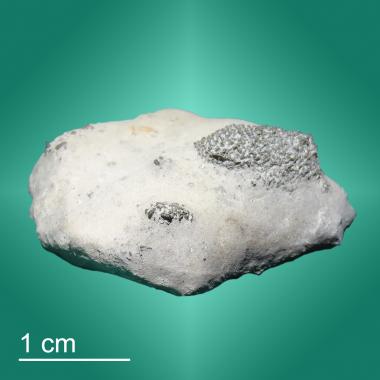
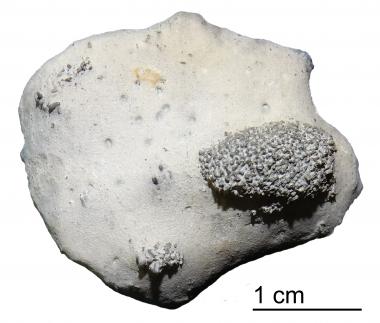
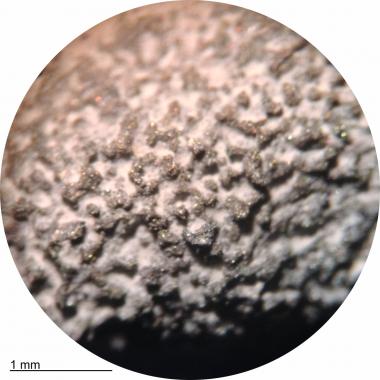
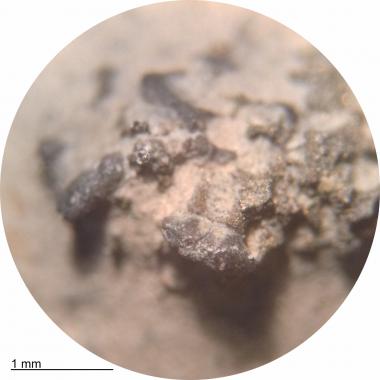
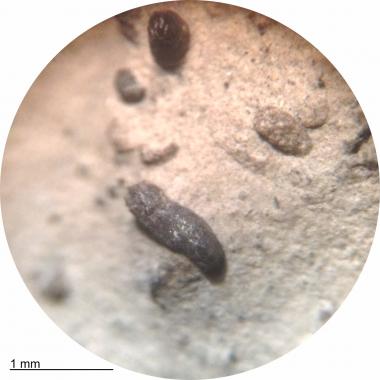
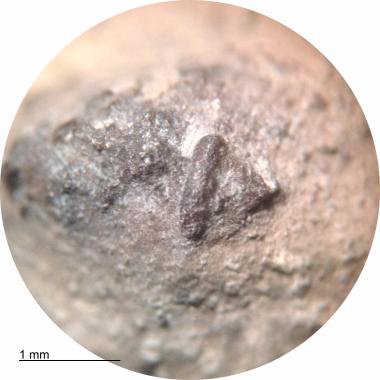
This piece of matrix was discovered in a trench dug for a sanitary sewer pipe for a school. I guess it is rather appropriate that it contains numerous tiny fecal pellets. A lobster bed exists directly below the oxynotum zone (the vicinity in which this was found), so it is very possibly these were produced by a lobster or another sea-dwelling invertebrate.
The first microscopic photo is of the larger dark area to the right. Without magnification, it look like a coprolite. However, up close, we can see that it is pyrite that has a pitted texture resembling that of a sponge. The second microscopic photo is of the dark area of the bottom center of the first image. Here we see two fecal pellets perched atop similar pyrite material. Because of this, we can venture to guess that the pitted texture of the larger dark area may be due to traces left by fecal pellets that once covered its surface. Because some modern crustaceans are known to fill or line their burrows with fecal pellets, it is very possible that these are the ancient ruins of prehistoric privies or tunnel stabilization structures!
